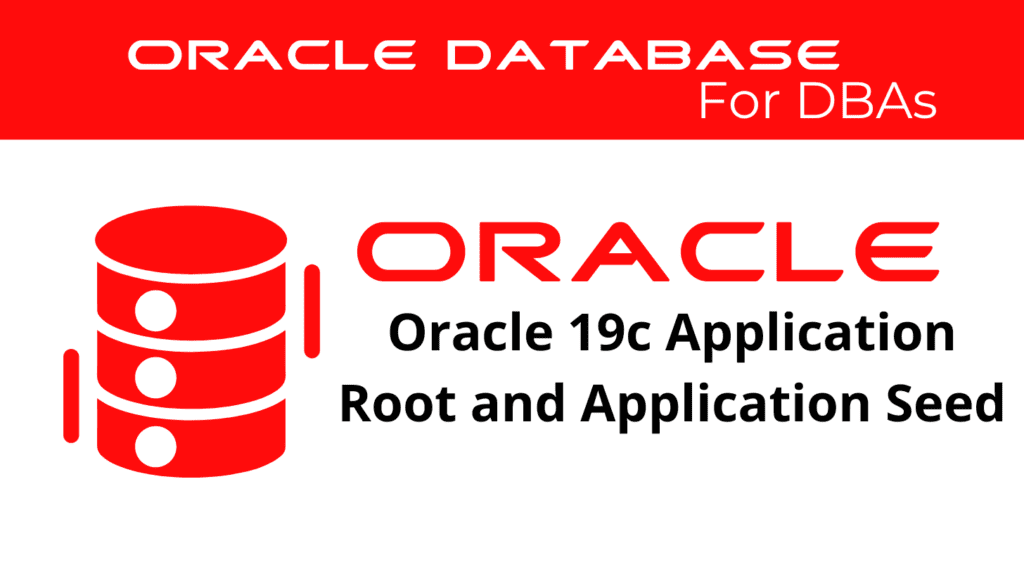
In Oracle 19c, understanding the purpose of Application Root and Application Seed is essential for effective database management. These concepts are vital for managing multitenant environments, ensuring efficient resource utilization and streamlined database operations. The Application Root and Application Seed play crucial roles in maintaining system efficiency and scalability.
Application Root
The Application Root is a central point in a multitenant container database (CDB) that contains common objects and metadata shared across all application PDBs (pluggable databases). It simplifies the management of these objects and ensures consistency across the environment.
Key Features of Application Root
Centralized Management: The Application Root allows for centralized management of common objects and metadata, reducing administrative overhead.
Consistency: It ensures consistency across all application PDBs by sharing common objects and definitions.
Efficiency: By centralizing common objects, the ApplicationRoot improves resource efficiency and reduces redundancy.
📢 You might also like: Oracle 19c Define and Create Application PDBs (Category: Oracle Database Admin)
Creating an Application Root
To create an Application Root in Oracle 19c, use the following commands:
CREATE PLUGGABLE DATABASE app_root AS APPLICATION CONTAINER ADMIN USER admin IDENTIFIED BY password;
This command creates an Application Root named app_root, which serves as the central point for managing common objects and metadata.
Monitoring Application Root
You can monitor the ApplicationRoot through Oracle Enterprise Manager or by querying dynamic performance views such as CDB_APP_ROOT and V$APP_ROOT. These tools provide detailed insights into the objects and metadata managed within the Application Root, allowing for proactive performance management.
Example query to monitor Application Root:
SELECT * FROM CDB_APP_ROOT WHERE CON_ID = (SELECT CON_ID FROM V$DATABASE);
This query provides information about the Application Root, including the objects and metadata it manages.
Application Seed
The Application Seed is a template used to create application PDBs within the multitenant environment. It contains the initial set of objects and metadata that are copied to new application PDBs, ensuring consistency and standardization.
Key Features of Application Seed
Standardization: The Application Seed ensures that new application PDBs start with a consistent set of objects and metadata.
Efficiency: It streamlines the creation of new application PDBs by providing a ready-to-use template.
Consistency: The Application Seed maintains consistency across the multitenant environment by standardizing the initial configuration of application PDBs.
Creating an Application Seed
To create an Application Seed in Oracle 19c, use the following commands:
CREATE PLUGGABLE DATABASE app_seed FROM app_root AS SEED FILE_NAME_CONVERT = ('/app_root/', '/app_seed/');
This command creates an Application Seed named app_seed from the Application Root, providing a template for new application PDBs.
Monitoring Application Seed
Monitor the Application Seed using Oracle Enterprise Manager and query dynamic performance views such as CDB_APP_SEED and V$APP_SEED. These views provide comprehensive data on the objects and metadata within the Application Seed, helping maintain optimal performance and standardization.
Example query to monitor Application Seed:
SELECT * FROM CDB_APP_SEED WHERE CON_ID = (SELECT CON_ID FROM V$DATABASE);
This query provides information about the Application Seed, including the initial set of objects and metadata it contains.
Benefits of Application Root and Application Seed
Understanding and utilizing Application Root and ApplicationSeed in Oracle 19c provide several benefits:
- Improved Management: Centralized management of common objects and metadata reduces administrative overhead.
- Consistency: Ensures consistency across all application PDBs by sharing common objects and providing a standardized template.
- Efficiency: Enhances resource efficiency by reducing redundancy and streamlining the creation of new application PDBs.
Monitoring the Application Root and Application Seed involves examining the objects and metadata they manage, ensuring that the multitenant environment remains efficient and consistent. This proactive approach helps database administrators maintain optimal performance and streamline database operations.
Best Practices
To effectively manage Application Root and Application Seed, consider these best practices:
- Regular Monitoring: Continuously monitor the Application Root and Application Seed to detect and resolve issues early. Use Oracle Enterprise Manager and dynamic performance views to gain insights into the objects and metadata managed within these components.
- Use Oracle Tools: Utilize Oracle Enterprise Manager and dynamic performance views for comprehensive monitoring. These tools provide real-time data and historical analysis, enabling DBAs to track performance trends and make informed decisions.
- Educate Team: Train the database team in understanding and managing Application Root and Application Seed. Ensure that team members are familiar with the tools and techniques used to monitor and manage these components.
- Keep Statistics Updated: Regularly gather and update statistics to help the optimizer make accurate decisions. Accurate statistics are crucial for maintaining the efficiency and consistency of the multitenant environment.
Additional Tips
- Implement Automation: Use automation tools to streamline the monitoring and management processes. Automated tools can alert DBAs to performance issues and suggest optimal adjustments.
- Conduct Regular Audits: Periodically audit the Application Root and Application Seed to identify long-term trends and areas for improvement.
- Engage in Continuous Learning: Stay updated with the latest Oracle updates and best practices. Continuous learning ensures that the team is equipped with the latest knowledge and techniques.
Conclusion
Oracle 19c’s capability to manage and monitor Application Root and Application Seed is crucial for maintaining optimal database performance. By leveraging these tools and strategies, database administrators can enhance SQL performance, ensure efficient resource utilization, and proactively address performance issues. Following best practices in managing and monitoring these components will help maintain a robust and efficient Oracle 19c environment.
Regular monitoring, proactive management, and continuous learning are essential components of effective database administration. By adopting these practices, organizations can ensure that their Oracle 19c databases operate at peak efficiency, delivering reliable performance even under varying workloads.
See more on Oracle’s website!
Be Oracle Database Certified Professional, this world is full of opportunities for qualified DBAs!





